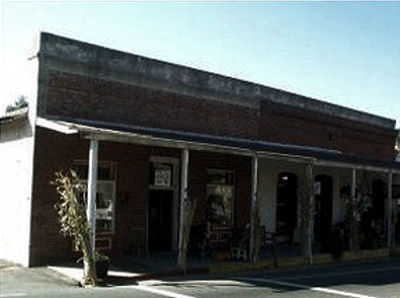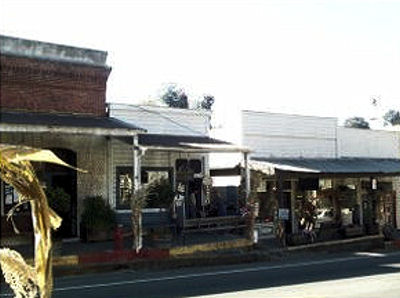





|
|
|
AMADOR CITY AREA TOURS
|
|
|
Amador City | ||
Returning to Sutter’s Mill in June of 1848, Amador’s party learned of the dry placers at what would later become Amador Creek. Two of the men, Sausevain and Sunol, left for the dry placers while Amador remained at the American River. He joined them later that month and the three men, with their retinue of some twenty Indian workers, took out from seven to nine pounds of gold a day. Besides mining, Amador was also a successful trader, selling cattle—$150 each—and provisions to the local miners. After being in the mines for about nine months off and on, Amador left for good early in 1849, returning to his rancho with thousands of dollars in gold. |
|
|
|
The Amador Hotel is one of the city’s oldest structures, the main entrance section being built sometime between 1855 and 1860. The building was apparently built in stages. In 1872, the current owner, a man named Harrington, added a large hall which was used as a town hall and later as a dining room. Four years later he added again, providing space for a doctor’s office, a drug store, and additional rooms. The entire structure was restored in the early 1990's. | ||
|
Amador and his party were not the only miners on the creek during those early days. A party of men from Oregon built two cabins and stayed during the winter of 1848/49. James Wheeler and his four partners built a large double cabin in the fall of 1849, as did a company from Virginia who also kept a stock of goods available for sale. A company of miners from New York were camped along Amador Creek by the end of 1849, which Bayard Taylor describes as being “lined with tents and winter cabins.” |
|
The Weil Building above was built shortly after the fire of 1878 destroyed his wooden warehouse on the same site. Rebuilding of brick, merchant Weil operated a general mercantile store here for a number of years. The building has also housed the Keystone Supply Company. |
||
In February of 1851, a Baptist minister from Tennessee named S. A. Davidson made the first discovery of gold-bearing quartz in the region, beside a crystal spring where miners often stopped to slake their thirst. Why was the minister able to spot the gold while experienced miners were not? Divine Intervention? We will never know. We do know that among his partners were M. W. Glover and Lemuel Herbert, both Methodist-Episcopal ministers, and Peter Y. Cool, who would become a minister in 1854. It’s not surprising that the claim came to be known as the “Ministers Claim.” |
|
|
The Peyton Building above was built to replace a wood-frame saloon which was destroyed in the fire of 1878. William Peyton erected this brick building in 1879, seemingly for another saloon. Perhaps tiring of the saloon business, Peyton rented the building in March of 1879 to J. R. Dunlap who then used the structure as a drug store and post office. A general store was located in the building at one time |
||

|
||
|
Historic photos courtesy of Amador County Archives CONTACT US
|
||


